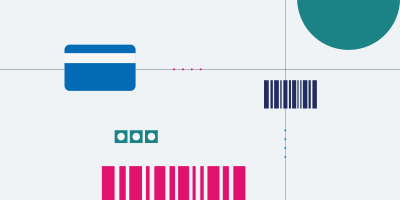
10 Essential E-commerce Tools for Growing Your Sales This Year

The burgeoning growth in e-commerce sales is only speeding up, with the e-commerce market in the United States slated to grow to $1.4 trillion by 2027. In the sea of e-commerce, one doesn’t need to be the big fish to take a piece of that loot.
But, doing so successfully requires a viable e-commerce strategy and a unique combination of tools to seamlessly engage customers, generate sales, fulfill orders, and generate customer loyalty.
Fortunately, we made a list of the essential e-commerce tools for you to consider adding to your martech stack.
Why are e-commerce tools important?
Why is any tool important? To help human beings do things easier. Our tools have evolved from the wheel and lever to Alexa ordering us paper towels, Google monitoring flight prices, and Apple Pay-powering our impulse purchases from Instagram ads.
You get the point. We are so accustomed to e-commerce that we hardly notice it drives a great deal of our online behavior (think of the pinned tabs for things you want to buy or your full shopping cart “wish lists”). Additionally, as the number of digital commerce channels we use increases, it quite literally pays to have an online store presence everywhere.
E-commerce tools help businesses stay apace with modern online consumer demands. They help you serve customers what they want — sometimes before they know they want it. Optimizing your online marketplace to provide the smoothest customer experience from discovery to purchase to return purchase and beyond is all powered by a network of synergistic e-commerce tools.
And we’re going to list the tools for e-commerce that’ll help make your online business flourish.
1. CMS for e-commerce websites
Online marketplaces like Amazon and Walmart allow you to easily tap into a site that’s already attracting e-commerce traffic. But it’s not the only way to sell online. Setting up your own e-commerce site gives you control over branding, product presentation, design, and so much more. You’ve got a great product, but how you present it to the world is just as important as the product itself. Building an e-commerce website is the foundation upon which your product will stand before customers, and few foundations are better than a good content management system (CMS).
A good CMS provides a vast range of options for omnichannel content management for B2B and B2C spaces. It gives a central location from which to distribute content across every channel, automate workflows, and compose digital experiences that fit your goals. We’re partial to Drupal because of its flexibility, plus, Drupal has its own dedicated e-commerce flavor with 100+ integrations all dedicated to e-commerce specific tasks such as: credit card processing, product filters, search, shopping carts, aesthetically pleasing product look displays, and the like.
2. Marketing automation software
E-commerce is an intricate web of interconnected technologies that all need to play nicely together. For the marketing teams in charge of managing those webs, it’s nice to be able to automate what we can. Marketing automation software is a massive time saver, taking on menial, repetitive tasks, crunching data, iterating, and analyzing, freeing up marketers to do creative work.
A prime example of marketing automation is email segmentation and personalization. Email is still one of the most powerful channels for marketing, with more than 89% of marketers using it to communicate with customers and prospects. Marketing automation software helps your marketers speed up the process of cross-journey segmentation and messaging personalization, greatly increasing team efficiency.
Marketing automation tools like Acquia Campaign Studio and Acquia Campaign Factory can integrate with your e-commerce platform so you can automate decisive, personalized actions on customer behavior.
3. Digital asset management software
Selling online requires photos, videos, illustrations, and other digital assets that represent your products and brand. A digital asset management (DAM) platform helps you organize and share all of this content. These assets are used to build your online store and support marketing efforts, like ads, email campaigns, and in-store promotions.
DAM systems allow teams to search for content by keyword, convert file formats, publish to multiple channels, and share assets with agencies, distributors, retailers, and other collaborators.
4. Product information management software
The other core content required for selling online is product information. Product information management (PIM) software helps brands prepare accurate, compelling product listings for their global e-commerce channels.
PIM software helps in three key areas. First, it aggregates technical information from engineering and product platforms. Second, it allows marketers to enhance product information with search-optimized descriptions, photos, and videos. Last, it helps transmit product listings to your e-commerce platform, digital marketplaces, and other marketing tools.
What’s more is that DAM and PIM systems can be connected and used together, giving your organization a comprehensive look at the entirety of your product content. When digital assets and the connected product descriptions are connected, your go-to-market speed and accuracy are at their highest. No more fussing around by transferring information between tools.
5. Project management tools
Selling and promoting your products online involves numerous stakeholders, deadlines, and overlapping processes. Keep your projects on course with project management software. It allows teams to track and manage work from start to finish and provides visibility around project deadlines and milestones. Project management tools can help your team plan effectively and understand the project scope and responsibilities. Tools like Asana, Jira, monday.com, and Trello are especially helpful for centralizing campaign tasks, organizing large-scale projects, and streamlining cross-functional team efforts.
6. Inventory tracking tools
Growing sales while managing your inventory levels can be a difficult balance. There are two types of software commonly used to manage inventory: an all-in-one enterprise resource planning (ERP) platform or a dedicated inventory and warehouse management system. An ERP platform supports inventory tracking in addition to other day-to-day business activities like accounting, procurement, and risk management. An inventory management system (IMS) is a specialized tool for integrating your fulfillment with major e-commerce systems.
Whether you’re using your ERP solution, an inventory tracking tool, or both, you’ll need a smart solution to sync orders with your inventory and e-commerce platform. Fortunately, you’ve no lack of powerful inventory tracking tools from the likes of Microsoft, Oracle, and SAP.
7. Customer service tools
At the heart of every good business is its customers. That’s why it’s so important to be ready to support their questions and needs. A customer service tool can help you engage them via text, mobile, phone, email, live chat, and social media. Plus, a knowledge base can help your customers quickly find the information they need to make a decision.
Customer relationship management (CRM) tools like Zendesk, Help Scout, and Salesforce were created to help build and maintain the connection between customers and your brand. Whether that’s through email communications, website behavior, phone calls, chatbot conversations, form submissions, subscriptions, unsubscriptions, purchases, returns, etc. — a CRM stores it all. This bridge between customer behavior and your sales, marketing, and support teams allows for better customer-facing interactions and background strategizing. A CRM will bolster ongoing engagement and collect helpful insights into how your customers interact with your organization, fueling your team with the data you need to better personalize customer experiences.
8. Rewards and referral program for e-commerce
Reward your faithful customers and entice new shoppers to return with refer-a-friend promotions, point-based reward programs, and VIP status. Even if you're new to the world of e-commerce website tools, setting up rewards points values and other promotions can be simple with the right rewards and referral tool. Some popular tools are Referral Rock, Friendbuy, and InviteReferrals.
You’ve likely interacted with tools like this without knowing. That 20% off popup on your favorite clothing site? The “get $50 if a friend signs up” button? Probably built and tracked by a referral/rewards tool. They’re great tools to have because you can track all your referral and rewards campaigns from one place, and monitor and adjust as you see fit.
9. Customer data tools
Customer data is one of the most valuable resources in e-commerce, but it can be quite the task to collect, organize, and synthesize it all. With the number of different locations and channels customer data is coming from (especially in e-commerce), taming a data tidal wave is important for success.
A customer data platform (CDP) is an essential e-commerce tool you need for centralizing customer data management, organization, and analysis. From this one hub, you’re able to build a 360° view of each unique customer. From there, your teams — aided by machine learning — can use that data to create hyper-personalized campaigns that are relevant to your customers’ wants and needs.
10. Analytics, insights, and data strategy
Bringing everything together, you’ll have a fair amount of tools to keep track of. They’ll all have different types of data, but in the grand scheme of things, it’s up to you to identify what’s working and what can be improved upon. Aside from tools in this article collecting their own data, there are others like Google Analytics, Heap, and Conductor that track day-to-day website traffic, performance, conversions, behaviors, etc. These tools are helpful for ongoing monitoring and can answer a ton of useful questions:
- What pages are popular and unpopular?
- Are there broken links?
- Where is conversion traffic coming from?
- How many people visit pages each day/week/month?
- How much time do people spend on your site?
- Where do people spend the most time on your site?
You get the picture. All of these things can help inform improvements and experiments. However, regardless of the tools you use to collect analytics and insights, a solid data strategy is key to those insights being useful. Your organization's goals will help shape that strategy. Fortunately, the overarching goal of e-commerce is pretty straightforward — get people to buy what you’re selling.
Less fortunately, those same potential customers have tons of options, so your data strategy is crucial to gaining that competitive edge and shaping the future of your business. Use those tools to challenge the digital experiences you’ve built, and construct something increasingly stronger.
Getting started
That was a lot of tools, we know. The most important takeaway is that these tools will only work well if you align them with what your organization needs and is capable of handling. Be deliberate about your tooling choices and you’ll find that they’ll be extra rewarding. You don’t have to do everything all at once; start with the most obvious places you can improve and keep looking for others. Just remember that tools are helpful, but they’re not a skeleton key; your ability to adapt to changes in the e-commerce landscape holds all the power. If you’re feeling ready to take your e-commerce experience to the next level, we’ve got a brilliant place to start. Get in touch and we’ll show you how Drupal and e-commerce make a powerful team; schedule a demo today!

Note: This article was originally published on Widen.com in 2020 and has been updated to remain current.

